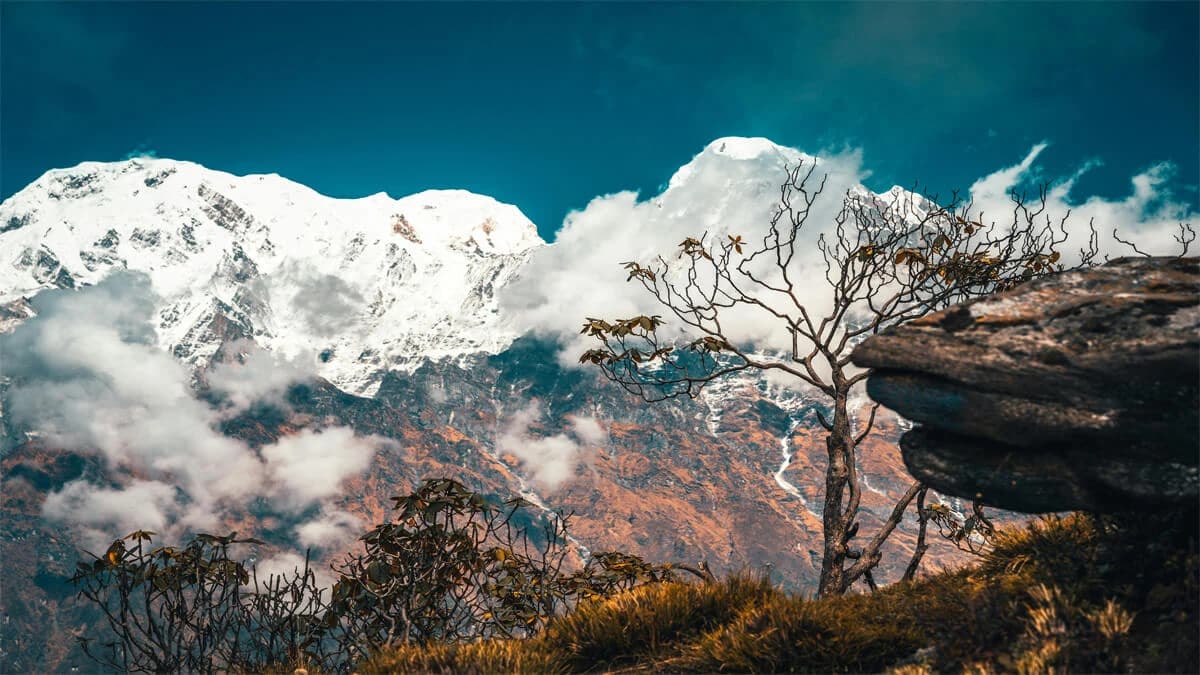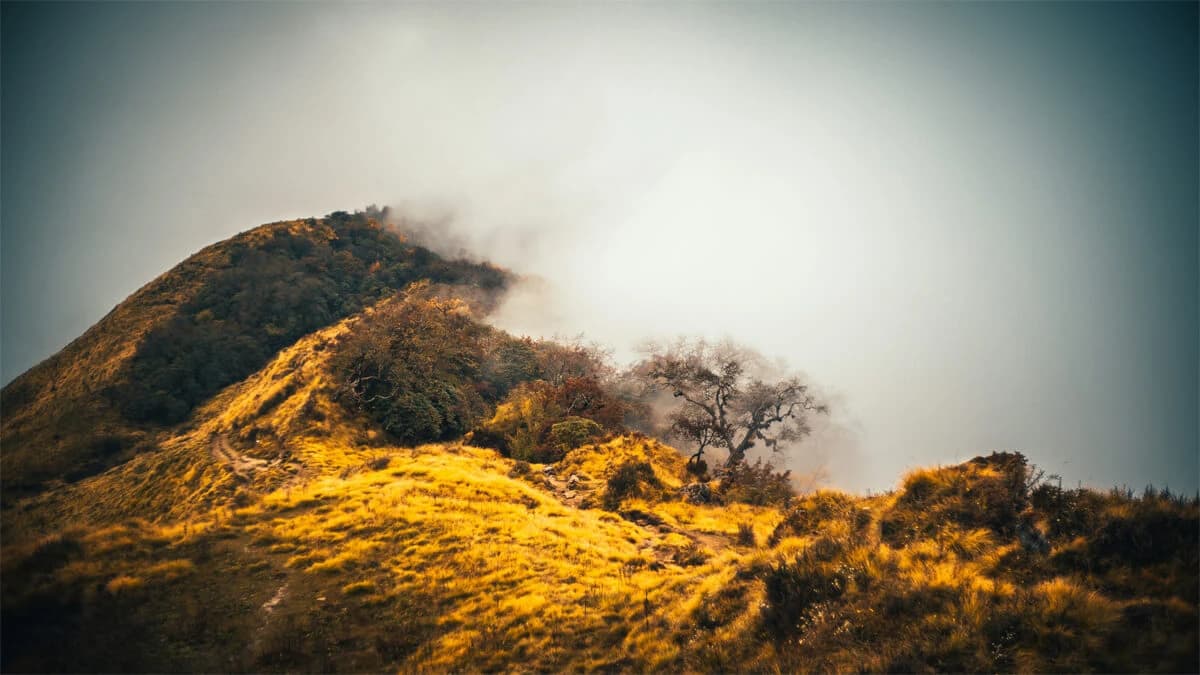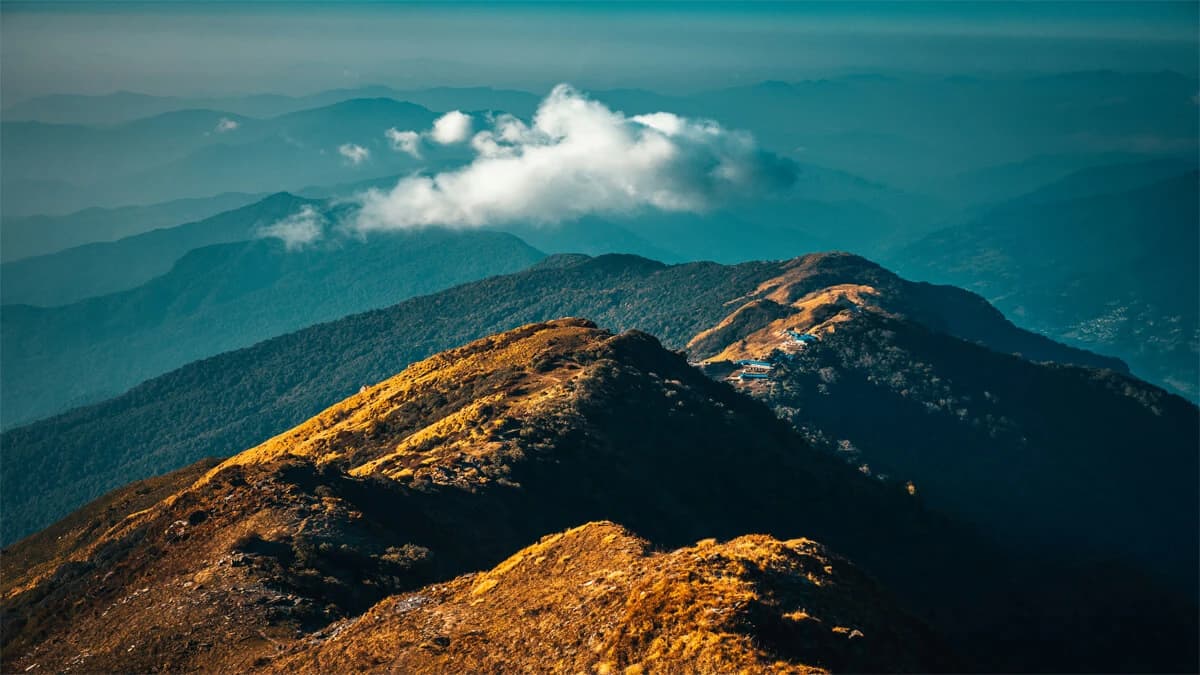Guerrilla Trek is a newly introduce trekking trail to promote war tourism in Nepal. This trek was formally inaugurate by the then Maoists’ Commander Prachanda on 2nd October 2012. Since then, this trek has been a matter of curiosity for many trekkers visiting Nepal.
Guerrilla trekking trails covers for about 274 kilometers of Myagdi, Baglung, Rukum and Rolpa districts. These were the most sensitive zones during the revolution. Many people lost their lives while all of them have been victims of cruel war.
The Guerrilla War of Nepal ran for about 10 years from 1996 to 2006. During the decade-long conflict, nearly 17,000 Nepalese: civilians, rebels and security personnel, lost their lives. Despite its irreparable loss of lives and property, it has now become a reliable source of income to the local people of this region.
Guerrilla trek has opened up a good chance of economic progress to the victims of the war. They have been involved in tourism industry as per their knowledge. The majority of the villages on the Guerrilla trekking route are of the Kham Magar community. These people are really simple-minded and hard-working.
Some homestay sites are open and run by these people to earn their livelihood. They provide you basic facilities of food and accommodation. Likewise, the cultural shows are performed in the evening to entertain the trekkers in their vicinity. This has benefitted them economically and helped them conserve their culture and tradition at the same time.
Walking through the rugged trails along the dense pine, and rhododendron forests, you have the wonderful sights of the Himalayas. Mt. Annapurna (8,091 m), Mt. Dhaulagiri (8,167 m), Mt. Manaslu (8,163 m) are the eight-thousanders seen during this trek. The Lesser Himalayas like Gurja Himal (7,193 m), Putha Himal (7,246 m), Sisne Himal (5,911 m) and Churen Mountain Range also come to your sight.
Guerrilla Trekking Highlights
- Easy trails leading to the origin of the decade-long Guerrilla Warfare in Nepal
- Knowledge about the Maoists’ Revolution (1996 -2006)
- Flora and fauna in Dhorpatan Hunting Reserve
- Amazing vistas of Mt. Annapurna (8,091m), Mt. Dhaulagiri (8,167m), Mt. Manaslu (8,163m), Gurja Himal (7,193m), Putha Himal (7,246m), Sisne Himal (5,911m) and Churen Mountain Range
- Ethnic groups being the Kham Magar dominant
- Homestay facilities, cultural shows of the Magar Communities
Guerrilla Trek Itinerary
Basically, the trek itinerary could have been design base on a few important factors. The duration of trekking per day, acclimatization day and the route you want to follow. As Guerrilla trekking is an easy trek in Nepal, you don’t need any acclimatization day.
Guerrilla trek itinerary ranges from 13 days to 27 days, which is enough for you to witness the cultural and natural fragrance of this region. 13 days’ itinerary is best fit for those having a short holiday, yet want to explore the base of the Guerrilla warfare in Nepal.
Besides this, 27 days package is an opportunity to have a leisurely visit of the origin of the Maoists’ Revolution. It lets you visit all the prime locations like the Maoists’ base camps, hideouts and secret trails.
Guerrilla Trek Map
Guerrilla trek starts from Beni, of Myagdi and moves ahead through Dhorpatan Hunting Reserve. Moving ahead, it takes you to Rolpa via some parts of Baglung and Rukum.
It leads you through the ethnic villages of Mid-Western Nepal of mixed communities being the Magar people dominant. As these districts had been the main bases during the Maoists’ Revolution happen between 1996 and 2006.
By witnessing the splendid views of Mt. Annapurna (8,091 m), Mt. Dhaulagiri (8,167 m), you continue the journey. You will also have the distant view of the Himalayas as far as Mt. Manaslu (8,163 m).
Guerrilla trek map encompasses the newly developed trekking trails of mid-Nepal that passes along the dense pine, fir, oak and rhododendron forests. Finally, you end up the trip in Sulichaur of Rolpa, the origin of the Guerrilla Warfare in Nepal.
On the other hand, you can also start this trek right from Sulichaur. To begin from here, you will drive from Butwal after visiting Lumbini, the birthplace of Lord Buddha. Finally, the trek ends up at Beni, the gateway to Upper Dolpo trek.
No matter, where you begin this historically important section of Nepalese tourism, you will have the wonderful vistas of the Himalayas and amazing landscapes. You will also sight Gurja Himal (7,193 m), Putha Himal (7,246 m), Sisne Himal (5,911 m) and many more.
Guerrilla Trek Difficulty
Guerrilla trek is comparatively easy type of trek as the trails move along the medium elevation. Although it has been a newly introduce trek in Nepal, the number of trekkers are growing these days.
The historical background of this trail attracts thousands of travelers every year. Guerrilla trek difficulty is justified by the condition of teahouses, trails and trekking hours. Being the new Nepal trekking region, teahouses provide the basic facilities of food and accommodation.
Although you spend the nights in the places above 2,500 m, there is not much threat of altitude sickness. You have to walk along the rugged trails for about 5 hours. The trekking trails go past the dense forests of Dhorpatan Hunting Reserve.
Due to the lack of participation of the local community people and concerned authorities, the trails are not in proper condition. In some sections, newly constructed roads have disturbed the trekkers. The traditional trails are destroyed on the one hand and on the other, the road is dusty as well.
Guerrilla Trek Permits
You should have two permits for doing the historical Guerrilla trek. They are TIMS Card and Dhorpatan Hunting Reserve Entry Permit. For your kind of information, this permit for Dhorpatan Hunting Reserve Entry is not for shooting the games!
TIMS Card have been receive from Nepal Tourism Board offices in Kathmandu and Pokhara. Guerrilla trek is a free individual trekking (FIT) region, therefore, even a solo trekker can be do this trek.
If you are doing this trek with a registered trekking guide, you have to pay USD 10 for the TIMS Card. On the other side, if you are an independent trekker, the cost is USD 20.
Dhorpatan Hunting Reserve Entry Permit would be issue only by the office of the reserve at Dhorpatan. You need to pay USD 30 for permit.



